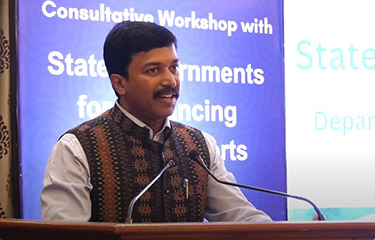India’s Marine Products Exports Development Authority (MPEDA) is pushing to double the country's production of value-added seafood over the next seven years.
Value-added seafood products are in higher demand in the U.S, E.U., Japan, and Asia, and deliver higher profits, according to MPEDA Chairman D V Swamy.
“We are aiming to achieve 20 percent value addition by 2030 given the changing preferences in the consumer market and rising competition from countries such as Thailand, Vietnam, and China,” Swamy told the Hindu BusinessLine.
India’s seafood exports reached USD 8.09 billion (EUR 7.36 billion) in value the most recent fiscal year, with value-added products accounting for 10 percent of the total, or roughly USD 860 million (EUR 783 million). The global seafood market is valued at USD 189 billion (EUR 172 billion), with value-added products representing 18 percent of that amount, or USD 34 billion (EUR 31 billion). India therefore controls around 2.5 percent of the global marketplace for value-added seafood products, Swamy said.
MPEDA hosted its first training session on 21 November with two Vietnamese seafood processing experts, Tran Quoc Son and Chu Thi Tuyet Mai. Representatives of 22 Indian seafood companies were present, and were given instruction on how to implement value-added processes into seafood processing facilities. Six identical trainings will take place on the east and west coasts of the country through December, according to MPEDA.
To meet the goal, MPEDA has launched a multi-pronged development initiative that includes capacity-building initiatives for the processing sector, worker training programs, and political initiatives to reduce bureaucracy and transition costs to the industry.
Swamy said to hasten the transition, MPEDA has been asked by Indian exporters to lobby for the removal of tariffs on breadcrumbs, sauces, pre-dust, coconut shavings, plastic trays, and other components of value-added seafood processing. They also requested India’s import duty exemption be raised from 1 percent to 3 percent of the freight on board (FOB) value of value-added exports.
India, the world’s third-largest fish producer, second-largest aquaculture producer, and fourth-largest seafood exporter, has plans to become an even bigger seafood player, having set a goal of reaching USD 14 billion (EUR 13.2 billion) in seafood exports by 2025.
Swamy reported India’s seafood exports have increased 6 percent by volume thus far in the current fiscal year, which ends in March 2024, which is up year over year. That includes a 17 percent increase in August 2023 and a 19 percent increase in September. However, Swamy said exports are down by value due to lower prices, which he said have now stabilized. Despite the headwinds, which includes political turbulence in the U.S. – India’s largest export market – India’s seafood industry is still hoping to equal or better its export figures from the previous fiscal year, Swamy said.
At the Global Fisheries Conference in Ahmedabad, India, on 22 November, India Minister of State for Fisheries, Animal Husbandry and Dairying L Murugan said the government will continue to support the industry's transition from near-shore to deep-sea fishing, providing financial assistance of up to 60 percent of the cost of converting fishing boats to enable them to travel further offshore. Furthermore, it will provide low- or no-interest loans to cover the remainder of the cost through India's Blue Revolution and the Pradhan Mantri Matsya Sampada Yojana (PMMSY) programs.
“Tuna fishes are in high demand worldwide, and India has the potential to increase its tuna-fishing capacity. However, we need technological advancements in this area," he said. “There is a need for research and design in upgrading fishing vessels to effectively harness the potential of deep-sea fishing in a sustainable way."
Murugan called for more start-ups to enter the deep-sea fishing sector and encouraged further collaboration between Indian research agencies, including the Indian Space Research Organisation's Space Application Center, to make fishing more efficient and safer.
World Bank Consultant Arthur Neiland estimated India is utilizing just 12 percent of the tuna in its exclusive economic zone, with the sustainable yields estimated to be around 179,000 metric tons annually, but with India's catches of yellowfin and skipjack tunas reaching 25,259 MT in 2022.
Photo courtesy of Marine Products Exports Development Authority of India







